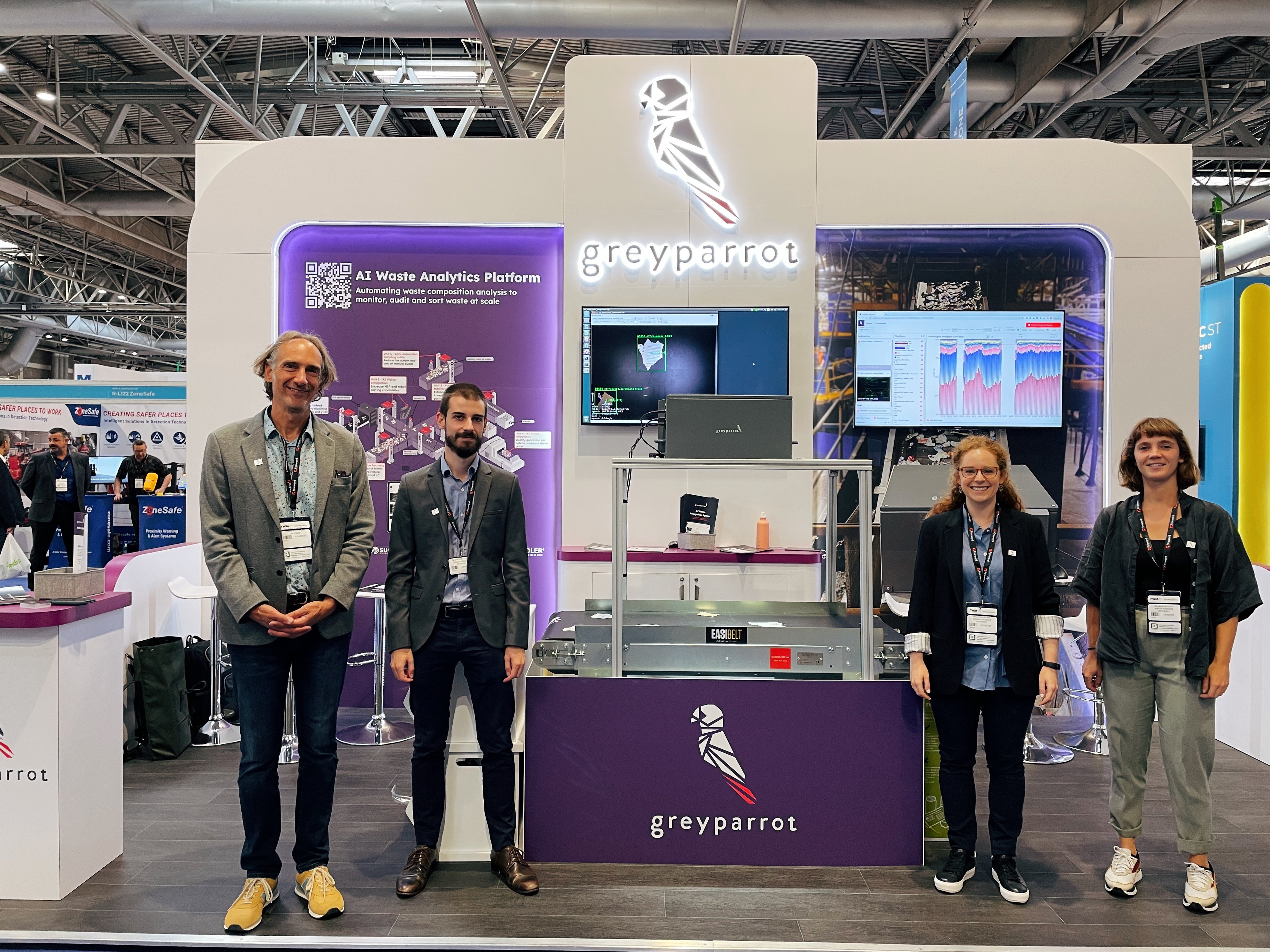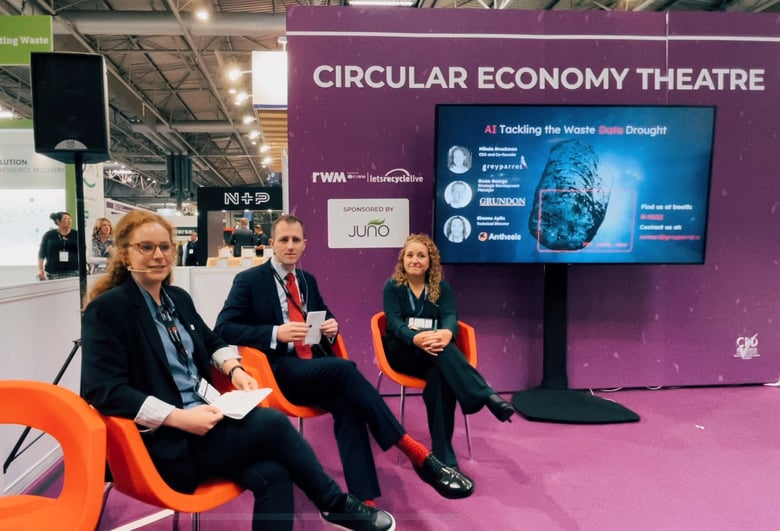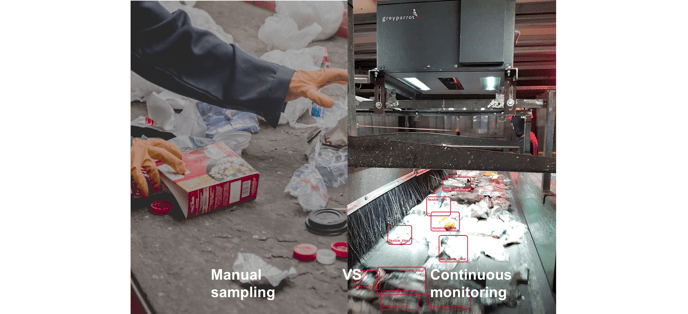How much do we actually know about waste? If research is to be believed, not much.
So little, in fact, that the idea of a ‘waste data drought’ was a hot topic at the recent RWM & Letsrecycle Live expo. We currently measure just 1% of waste, with mismanagement causing over a third to be burnt or sent to landfills around the world.
But how much can we know about waste? Can technology like AI end the data drought?
They’re big questions, but that’s exactly why our CEO Mikela Druckman wanted to talk about them. Here are the key takeaways from her panel discussion with Owen George, Grundon’s Strategic Development Leader, and Simone Aplin, Technical Director at Anthesis.
You can't optimise what you don't measure
.jpg?width=933&height=515&name=mikela-panel-rwm%20(1).jpg)
Before talking about solutions, Mikela laid out the challenges caused by the current lack of waste stream visibility:
- Quality control: Without an understanding of waste stream composition, it’s difficult to guarantee the quality of infeed material and final products.
- Process optimisation: Operators can’t adjust sorting processes to account for real-time fluctuations in quality.
- Manual processes: Manual sampling is inefficient, expensive, and only offers a snapshot of material composition.
- Compliance: New requirements like Extended Producer Responsibility (EPR) mean that waste has to be tracked throughout its life.
Owen offered the MRF perspective:
“It’s sort of a ‘known unknown’ in the sector. We’d love to have that data and insight, because we’re snapshotting 60 kilograms of material for every 120 tonnes of waste.
The MRF sector produces high-value products, but we don’t know the accurate composition of our feed stream.”
Closing data gaps – the story so far
Owen’s not the only person to have recognised this issue. Defra’s Resources and Waste Strategy outlined the need for a digital waste tracking service to achieve its goals of resource efficiency. For Simone, who worked on the first two phases of that project, this was an exciting development:
“It was a commitment made by Defra in recognition of the data drought. If we’re going to have a sophisticated policy, we need a sophisticated way of measuring its impact.”
So, how can AI help? As the Resources and Waste Strategy becomes more complex with the introduction of plastic taxes and EPR, current data collection methods won’t be detailed enough.
Tracking product recyclability at a brand or material level requires a level of granularity that only AI-powered automation can provide at scale:
“We [currently] know tonnage and European Waste Catalogue (EWC) codes, but we don’t know exactly what’s in the waste – all these nuances are going to be really important for EPR. Digital waste tracking is a massive step forward, but if we can build in information from AI, that’s true transformation.”
How AI waste analytics helps MRFs adapt
Regulations affect MRFs and PRFs, as well – and the applications of AI waste analytics are similarly impactful. Owen sees the upcoming changes as a chance to optimise:
“With EPR and DRS, we’re about to see an uncertain environment in terms of waste composition. Facilities driven by AI – whether it’s integrated with sorters, NIR, or mechanical screens – will have a transformational impact on performance, costs and product quality.”
The ability to reliably characterise new materials is also a priority for recovery facilities. One such example came in Mikela’s introduction, when she touched on our efforts to recognise batteries earlier in the recycling process.
Owen flagged this as an important effort to mitigate fire risks. Developments like these are what he thinks will set MRFs apart in the near future:
“We can’t deliver the circular economy that we need without it. That granularity of data ensures we’re delivering quality raw material alternatives. Companies that use data to optimise their plants will have a significant advantage over those who don’t embrace that change.”
The ability to adapt to waste composition in real time isn’t just a nice-to-have – it’s becoming a key differentiator, and a direct contributor to cost efficiency and product quality.
AI’s impact beyond the waste and resources sector
Those evolving requirements were part of the reason that the data drought was on so many minds at the expo. It’s not just the attendees of waste management conferences that are interested, though. As Simone explained, brands and retailers need the data AI has to offer.
“They want to understand how their products perform in real life. How recyclable are they, and what happens when they get to an MRF?”
Modulated fees are just one side of the coin. The plastic tax has meant that more manufacturers care about the composition of the recyclable material they use – the ability to guarantee that they’re receiving food-grade plastics, for example, requires 100% visibility into waste streams. That requires continuous waste stream analysis, which manual sampling can’t provide.
In Simone’s words, “there are so many points in the circular economy where AI can give us that assurance.”
Could waste data change the industry’s role?
By providing that assurance, the waste industry could take on an entirely new role. Owen argued that it could be the role it should have had all along:
“AI is going to change our position in the circular economy. We see a lot of packaging companies that don’t take real recyclability into account. With the detail AI gives us, we can start to inform the design process, and play a much bigger role in how materials are used and captured.”
In other words, the waste industry could soon gain significant influence on the entire value chain, moving from the sidelines to the centre of what makes the circular economy possible.
With a new emphasis on the full lifecycle of packaging, the waste industry has an opportunity to gather the data that brands need to meet changing requirements. Instead of adapting recycling to producers, products themselves now need to take recovery processes into account at the design stage – or risk heavier fines.
We’re already seeing that change take place. In response to a question about brand collaboration, Mikela had this to say:
“We’re working with an AI consortium, set up by major producers like PepsiCo, in an effort to make their packaging easier to recognise for recycling technology. They’re now getting involved in how their packaging is designed, so it fits the waste value exchange.”
That data transfer isn’t limited to brands.
For Owen, AI’s role goes beyond organisations and could impact consumer behaviour, too. He recognises the need for a cultural shift in the industry towards transparency, and sharing data which could go some way towards addressing skepticism about recycling’s effectiveness.
Where to start
AI presents such a seismic increase in visibility that both Simone and Owen see the need for even further culture shifts to make adoption work. In Simone’s view, it’s difficult to extract value from AI without investing in supportive processes and training:
“I actually think there’s a bit of a challenge for people to work out what they’ll do with all the data. They’re going to need some help to identify the insights that are going to help them optimise.”
Her perspective aligns with AI research. BCG found that businesses getting the most value from AI had dedicated 70% of their investment to process change and “agile ways of working.” In identifying the people who will make that change possible, Owen echoed another common theme from the expo:
“The industry needs youth, and a broader mindset to capture data and use it to innovate and grow.”
Culture shifts aside, there’s an even more fundamental question that organisations need to answer. Mikela rounded out the discussion with a final prompt – AI clearly has massive potential, but what’s the very first step businesses can take towards adoption?
For Simone, the answer is simple:
“Ask yourself what you’d like to know. If you could learn anything about the waste you’re producing or managing, what would it be? What would you like to know?”

What would you like to know?
Greyparrot is the AI-powered waste analytics system for the circular economy.
We use computer vision to analyse 100% of waste streams and deliver insight to operators – closing the waste data gap. Want to learn more about your material? Book a free consultation and tell us what you’d like to know.






